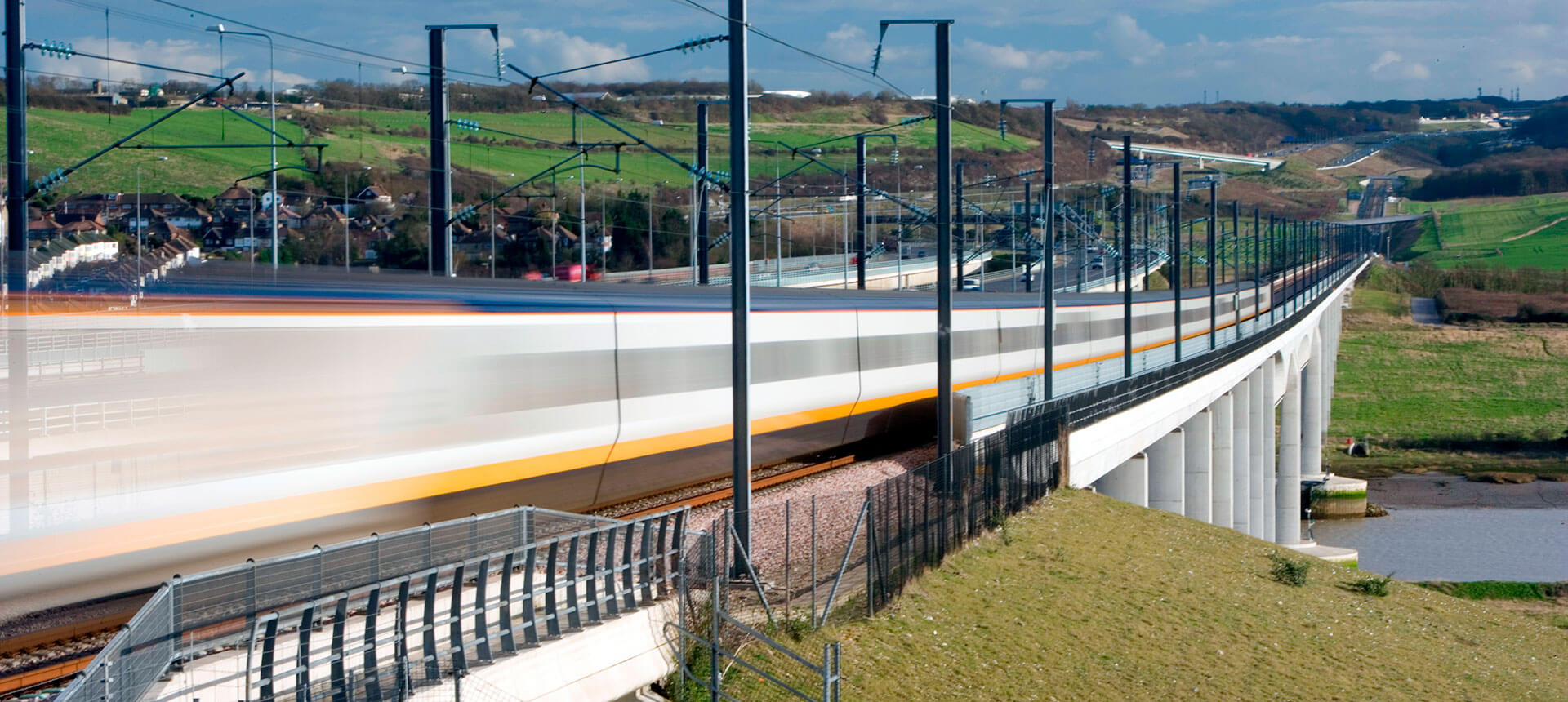Channel Tunnel
GGBS has been used in the construction of the Channel Tunnel rail link to guarantee the durability of the concrete.
Concrete containing GGBS is less permeable and chemically more stable than a conventional mix, enhancing its resistance to many types of attack.
The new railway was constructed through ground which included London clays with high sulfate content – giving the potential for conventional sulfate attack on the concrete.
In addition, limestone aggregate was used in some of the concrete for high strength and to lower the coefficient of thermal expansion of the concrete to minimise the risk of thermal cracking. This use of limestone aggregate in sulfate soils produced the added risk of the thaumasite type of sulfate attack.
But, the use of a 70 per cent ratio of ggbs to 30 per cent Portland cement prevented the possibility of both forms of sulfate attack, while also providing protection to the steel reinforcement by minimising the ingress of chloride from de-icing salts.
It ensured a highly durable structure and significantly reduced the carbon dioxide emissions associated with the production of concrete.
